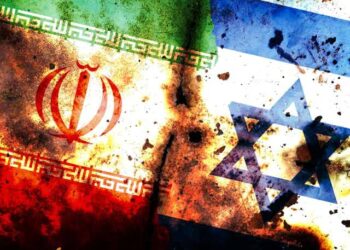Tensions between India and Pakistan have escalated dramatically as India launched a series of strikes on several parts of Pakistan and Pakistan-controlled territory.
This military operation, dubbed “Operation Sindoor,” targeted nine sites in “Pakistan and Pakistan-occupied Jammu and Kashmir” from where terrorist attacks against India have been planned and directed.

The strikes mark a significant escalation in the longstanding India-Pakistan conflict, particularly in the disputed Kashmir region.
The immediate reactions from both countries have been intense, with each side maintaining its stance on the issue.
Key Takeaways
- The Indian military launched “Operation Sindoor” against terrorist sites in Pakistan and Pakistan-occupied Jammu and Kashmir.
- The operation targeted nine sites associated with planning and directing terrorist attacks against India.
- The strikes represent a significant escalation in the India-Pakistan conflict.
- Both countries have reacted strongly, maintaining their respective positions on the Kashmir issue.
- The situation remains tense, with potential implications for regional stability.
- ‘Justice Is Served’: India Hits At PoK Terror Base; Indian Army Launches Operation Sindoor



Breaking Down Operation Sindoor: India’s Military Strike on Pakistan
In a bold move, India initiated ‘Operation Sindoor,’ a military strike targeting several locations in Pakistan. This operation has significantly escalated tensions between the two nations, drawing international attention.
Timeline of the Recent Military Action
The military action began early in the morning, with reports indicating that Indian forces struck multiple targets across Pakistan, including in the disputed Kashmir region. The strikes were reportedly carried out using advanced weaponry, resulting in significant damage to the targeted locations.
Details about the exact timeline and the number of strikes vary, but it’s confirmed that the operation was extensive, involving various branches of the Indian military.
Official Statements from Indian Government
The Indian government released a statement asserting that the strikes were a response to ongoing terrorist activities in the Kashmir region, supported by Pakistan. Officials emphasized that the operation was aimed at dismantling terrorist infrastructure and preventing future attacks.

Indian authorities have maintained that the strikes were precise and targeted, minimizing collateral damage and civilian casualties.
Initial Reports from International Media
International news outlets such as BBC, Reuters, and Al Jazeera have provided extensive coverage of the operation, citing reports from both Indian and Pakistani sources. According to these reports, there are discrepancies in the number of locations hit, with Indian officials claiming nine targets and Pakistani officials reporting five.
The international community is closely monitoring the situation, with calls for restraint from both sides to prevent further escalation.
Target Locations: Where India Strikes Occurred
Recent military actions by India have focused on specific sites in Muzaffarabad and other areas of Pakistan-administered Kashmir. The Indian government has confirmed that the strikes were part of Operation Sindoor, aimed at targeting terrorist infrastructure.

Muzaffarabad and Pakistan-administered Kashmir
Muzaffarabad, the capital of Pakistan-administered Kashmir, has been identified as one of the key locations targeted during the Indian military strikes. The city holds significant strategic importance due to its geographical location and infrastructure.
The strikes in Muzaffarabad and surrounding areas were reportedly aimed at disrupting terrorist operations and infrastructure. According to official statements, India has targeted several terrorist camps and infrastructure within Pakistan-administered Kashmir.
Strategic Significance of Selected Targets
The selection of targets by India indicates a strategic approach to disrupting terrorist activities in the region. The targeted locations are believed to be significant for terrorist organizations operating in Kashmir.
The strategic significance of these targets lies in their potential to disrupt the operational capabilities of terrorist groups. By targeting infrastructure and camps, India aims to weaken the logistical and organizational networks of these organizations.
Damage Assessment Reports
Initial reports suggest that the strikes resulted in significant damage to the targeted locations. The exact extent of the damage is still being assessed, with ongoing efforts to gather more detailed information.
Damage assessment is crucial in understanding the effectiveness of the strikes and their impact on terrorist operations. The Indian military is working to verify the outcomes of the operation, including any potential civilian casualties or collateral damage.
The Catalyst: What Prompted India’s Operation Sindoor
In response to a surge in terrorist activities and continued tensions along the Line of Control, India initiated ‘Operation Sindoor,’ a significant military strike against Pakistan. The Indian Defense Ministry stated that these strikes were in response to a militant attack that killed 26 people in India-administered Kashmir last month.
Recent Tensions Along the Line of Control
The Line of Control has long been a flashpoint between India and Pakistan. Recent tensions have escalated due to increased militant activities and skirmishes along the border. These tensions have been building up over months, creating an environment ripe for conflict.
Terrorist Activities in Kashmir Region
The Kashmir region has been a hotbed of terrorist activities, with various militant groups operating in the area. The recent militant attack that prompted Operation Sindoor was a significant escalation, drawing a strong response from the Indian government.
Political Context Behind the Military Decision
The political context behind Operation Sindoor is deeply intertwined with the revocation of Article 370 and the ongoing dispute over Kashmir. The Indian government’s decision to undertake military action reflects its commitment to addressing terrorist threats and maintaining sovereignty.
The operation signifies a firm stance against terrorism and is seen as a measure to deter future militant attacks. The situation remains volatile, with both countries on high alert.
Pakistan’s Response to Indian Strikes
Pakistan has reacted forcefully to India’s Operation Sindoor, with a comprehensive response that includes military and diplomatic measures. The Pakistani government and military have been swift in their condemnation of India’s actions and have taken concrete steps to counter the perceived aggression.
Official Statements from Pakistani Government
Pakistani Prime Minister Shehbaz Sharif strongly condemned India’s attacks, stating that Pakistan would respond forcefully to any aggression. The government has been vocal in its criticism of India’s actions, framing them as a violation of Pakistan’s sovereignty.
Key Excerpts from Official Statements:
| Statement | Source |
|---|---|
| “Pakistan will not be intimidated by India’s aggression.” | Pakistani Prime Minister Shehbaz Sharif |
| “We will respond forcefully to protect our sovereignty.” | Pakistani Foreign Ministry Spokesperson |
Military Mobilization and Alert Status
Pakistani military officials announced that they had begun a “measured but forceful” response to the Indian strikes. The military has been placed on high alert, with troop deployments along the Line of Control (LoC) being reinforced.
The military mobilization is seen as a direct response to India’s Operation Sindoor, aiming to deter further Indian aggression.
Public Reaction in Pakistan
The public reaction in Pakistan has been one of outrage and solidarity with the government’s stance against India. Protests were held in major cities, with demonstrators condemning India’s actions and supporting the government’s response.

As the situation continues to unfold, the international community remains watchful, with many calling for restraint from both sides. The response from Pakistan reflects the complex and tense nature of the India-Pakistan relationship, particularly concerning the Kashmir region.
India Pakistan India Operation Sindoor India Pakistan War Pakistan India Attack: Comprehensive Analysis
The India-Pakistan conflict has once again escalated with Operation Sindoor, a significant military strike that has garnered international attention. This operation is seen as a major development in the ongoing tensions between the two nations.
Historical Context of India-Pakistan Military Confrontations
The conflict between India and Pakistan has a long and complex history, with multiple military confrontations over the years. The Kashmir dispute has been a central issue, leading to several wars and skirmishes. Understanding this historical context is crucial to grasping the significance of Operation Sindoor.
The roots of the conflict date back to the partition of India in 1947. Since then, there have been several major conflicts, including the Indo-Pakistani Wars of 1947, 1965, and 1971, and more recent skirmishes along the Line of Control in Kashmir.
Significance of the Operation’s Name “Sindoor”
The name “Sindoor” holds significant cultural and symbolic meaning in the context of Indian culture. Sindoor is a red powder worn by married women as a symbol of their marital status. The choice of this name for the operation may signify the depth of commitment or the importance of the action taken by India.
The operation’s name could also be interpreted as a signal of the seriousness and the red-line nature of the action taken by India against Pakistan.
Comparison to 2019 Balakot Strikes
Operation Sindoor can be compared to the 2019 Balakot strikes, where India conducted airstrikes against terrorist camps in Pakistan. Both operations demonstrate India’s willingness to take military action against perceived threats from across the border.
- Both operations were significant escalations in the conflict.
- They highlight India’s proactive stance against terrorism.
- The international community’s response to both operations has been varied, with some countries calling for restraint and others supporting India’s actions.
In conclusion, Operation Sindoor represents a significant development in the India-Pakistan conflict, echoing historical tensions and raising questions about its implications and outcomes.
International Reactions to India-Pakistan Conflict Escalation
The United Nations has convened an emergency session to address the escalating conflict between India and Pakistan. This move underscores the global community’s concern over the rising tensions and potential implications for regional stability.
United Nations Emergency Sessions
The UN Security Council held an emergency meeting to discuss the recent military actions between India and Pakistan. The session highlighted the international community’s efforts to broker peace and prevent further escalation.
Global leaders emphasized the need for restraint and called for a peaceful resolution to the conflict. The UN Secretary-General expressed deep concern over the situation, urging both nations to adhere to international law and respect the Line of Control.
Statements from Global Powers
The international community has been vocal in its response to the conflict, with major powers issuing statements and calling for calm.
United States Position
The US State Department released a statement expressing concern over the escalation and urging both India and Pakistan to exercise restraint. President Trump publicly commented on the situation, stating that the escalation between the two nations was “a shame.”
China’s Stance
China, a key ally of Pakistan, has expressed its support for Pakistan’s position, calling for a peaceful resolution through diplomatic channels. China’s foreign ministry stressed the importance of respecting the sovereignty and territorial integrity of nations involved.
Russia’s Response
Russia has maintained a balanced approach, advocating for dialogue between India and Pakistan to resolve their differences. The Russian Foreign Ministry issued a statement calling for an immediate cessation of hostilities and a return to negotiations.
Regional Neighbors’ Concerns
Countries in the region have also been closely watching the developments, with many expressing concern over the potential spillover effects. Neighboring nations have called for a peaceful resolution, fearing that an escalation could destabilize the entire region.
The international community remains engaged, with ongoing efforts to mediate and facilitate a peaceful resolution to the conflict between India and Pakistan.
Media Coverage: How BBC, Reuters, and Al Jazeera Are Reporting the Crisis
In the midst of rising tensions between India and Pakistan, news outlets like BBC, Reuters, and Al Jazeera are playing a crucial role in shaping public understanding of the conflict. The coverage by these major media houses has not only highlighted the military aspects of the conflict but also delved into the geopolitical and social implications.
Western Media Perspectives
Western media outlets such as BBC and Reuters have provided comprehensive coverage of the conflict, often focusing on the diplomatic fallout and the potential for escalation. For instance, BBC News has been at the forefront, offering live updates and in-depth analysis of the military strikes and counter-measures taken by both countries. Reuters has also reported extensively on the reactions from Western capitals, including statements from government officials.
Asian News Coverage
In contrast, Asian news outlets like Al Jazeera have often highlighted the regional dynamics and the historical context of the India-Pakistan conflict. Their coverage includes perspectives from neighboring countries and analysis of how this conflict might affect regional stability.
Social Media Information Spread and Misinformation Concerns
The role of social media in the dissemination of information during the conflict cannot be overstated. While platforms like Twitter and Facebook have enabled real-time updates, they have also become breeding grounds for misinformation. The spread of unverified information has raised concerns among both governments and the public.
| News Outlet | Focus of Coverage | Notable Reports |
|---|---|---|
| BBC News | Diplomatic fallout, Military strikes | Live updates, Analysis of government reactions |
| Reuters | Western reactions, Government statements | Detailed reports on international reactions |
| Al Jazeera | Regional dynamics, Historical context | Analysis of regional impact, Neighboring countries’ perspectives |
The diverse coverage by these news outlets underscores the complexity of the conflict and the varied perspectives from which it is being reported. As the situation continues to unfold, the role of media in providing accurate and timely information will remain critical.
Kashmir: The Epicenter of India and Pakistan Conflict
Nestled in the Himalayas, Kashmir is more than just a scenic paradise; it’s a region embroiled in a complex geopolitical conflict. The Kashmir dispute has been a longstanding issue between India and Pakistan, with both countries claiming sovereignty over the region.
Historical Background of the Kashmir Dispute
The Kashmir conflict began in 1947 when British India was partitioned into India and Pakistan. The princely state of Jammu and Kashmir, with its Muslim majority population but Hindu ruler, was given the option to join either country. The ruler’s decision to accede to India led to a rebellion and subsequent invasion by Pakistani forces, resulting in the division of Kashmir into Indian-administered and Pakistan-administered territories.
The Line of Control (LoC) has become one of the most militarized borders in the world, with frequent ceasefire violations and skirmishes.
Strategic Importance of the Region
Kashmir’s strategic importance stems from its geographical location, bordering China, India, and Pakistan. The region is a critical source of water, with several major rivers flowing through it. Control over Kashmir is seen as crucial for the water security of the surrounding regions.
The table below highlights the key aspects of Kashmir’s strategic importance:
| Aspect | Description | Significance |
|---|---|---|
| Geographical Location | Bordering India, Pakistan, and China | Strategic military advantage |
| Water Resources | Several major rivers including the Indus | Crucial for water security |
| Economic Potential | Rich in natural resources and tourism potential | Economic benefits for the controlling nation |
Impact on Kashmiri Civilians
The ongoing conflict has had a devastating impact on the Kashmiri civilians, with frequent LoC violations resulting in loss of life and displacement. The region’s infrastructure and economy have also suffered due to the instability.
The latest updates on the Kashmir conflict highlight the continued tensions and humanitarian concerns. Efforts to resolve the dispute have been ongoing, but a lasting solution remains elusive.
Military Analysis: Weapons and Tactics Used in Operation Sindoor
India’s military response, codenamed Operation Sindoor, involved sophisticated weaponry and tactical maneuvers. The operation was a significant escalation in the Kashmir conflict, with India employing advanced military capabilities to strike at terrorist strongholds in Pakistan-administered Kashmir.
Strike Capabilities
India’s strike capabilities during Operation Sindoor were characterized by the use of precision-guided munitions and advanced fighter jets. The BrahMos missiles played a crucial role in the operation, allowing for deep penetration into enemy territory with minimal collateral damage.
Pakistan’s Defense Systems
In response to India’s military action, Pakistan scrambled its JF-17 fighter jets to counter the Indian aircraft. Pakistan’s air defense systems were put on high alert, but the effectiveness of these measures is still being assessed.
Comparison to Previous Engagements
Operation Sindoor can be compared to the 2019 Balakot strikes, where India also targeted terrorist camps in Pakistan. However, Operation Sindoor involved more advanced weaponry and a more coordinated military response.
| Aspect | Operation Sindoor | 2019 Balakot Strikes |
|---|---|---|
| Weaponry Used | BrahMos missiles, Precision-guided munitions | Air-launched cruise missiles |
| Tactical Approach | Multi-pronged attack, involving air and ground assets | Airborne strike |
| Response from Pakistan | JF-17 scramble, Enhanced air defense alert | Initial denial, followed by admission of damage |
The analysis of Operation Sindoor highlights India’s evolving military capabilities and its willingness to take decisive action against terrorist threats. The international community is closely watching the implications of this operation on the region’s security dynamics.
Conclusion: Diplomatic Pathways and Future Implications
The ongoing conflict between India and Pakistan remains a significant concern for regional and global stability. As Operation Sindoor demonstrates, military actions can escalate tensions, making a peaceful resolution challenging.
Diplomatic pathways are essential for resolving the India-Pakistan conflict. International diplomatic efforts can help reduce tensions and promote a peaceful resolution. The United Nations and other global organizations can play a crucial role in facilitating dialogue between the two nations.
The future implications of the conflict are far-reaching, with potential impacts on regional stability and global security. Travel advisories for Jammu & Kashmir remain in place, cautioning against non-essential travel to the region.
A peaceful resolution to the conflict requires a commitment from both India and Pakistan to engage in meaningful dialogue. The international community must continue to encourage diplomatic efforts to resolve the conflict, promoting stability in the region.
FAQ
What is Operation Sindoor?
Operation Sindoor refers to the recent military strikes conducted by India against targets in Pakistan-administered Kashmir, marking a significant escalation in the ongoing Kashmir conflict.
What were the targets of the Indian strikes?
The Indian strikes targeted locations in Muzaffarabad and other areas within Pakistan-administered Kashmir, with the specific targets and extent of the damage still being assessed.
What prompted India to launch Operation Sindoor?
The operation was reportedly in response to recent tensions along the Line of Control, terrorist activities in the Kashmir region, and is seen as a continuation of India’s military actions following incidents like the Pulwama attack.
How has Pakistan responded to the Indian strikes?
Pakistan has issued strong condemnations through official government statements, mobilized its military, and heightened its alert status, with significant public reaction against the Indian military action.
What are the international reactions to the escalation?
The international community has reacted with concern, including emergency sessions at the United Nations, statements from global powers like the US, China, and Russia, and expressions of concern from regional neighbors.
How have different media outlets covered the crisis?
Media coverage has varied, with Western outlets like BBC and Reuters providing detailed reports, Asian news channels offering regional perspectives, and social media playing a significant role in information dissemination, alongside concerns about misinformation.
What is the historical context of the Kashmir conflict?
The Kashmir conflict has its roots in the partition of India and Pakistan, with both countries claiming the region, leading to multiple wars and ongoing tensions, including the recent escalation.
What are the potential diplomatic pathways for resolving the conflict?
Diplomatic efforts could involve negotiations between India and Pakistan, facilitated by international actors, focusing on confidence-building measures, and addressing the core issues driving the conflict.
What are the implications of the ongoing tensions for regional stability?
The ongoing tensions between India and Pakistan have significant implications for regional stability, including potential impacts on travel advisories, economic stability, and the risk of further military escalation.
How has the conflict affected Kashmiri civilians?
The conflict has had a profound impact on Kashmiri civilians, including displacement, loss of life, and psychological trauma, highlighting the need for a peaceful resolution to the conflict.
What is the significance of the name “Operation Sindoor”?
The name “Operation Sindoor” symbolizes the Indian military’s action, with “Sindoor” being a significant cultural reference in the Indian context, though the specific meaning in this military context is subject to interpretation.
How does Operation Sindoor compare to previous military actions like the 2019 Balakot strikes?
Operation Sindoor is seen as part of a pattern of Indian military responses to perceived terrorist threats from across the border, with similarities and differences in strategy and execution compared to the 2019 Balakot strikes.




















































